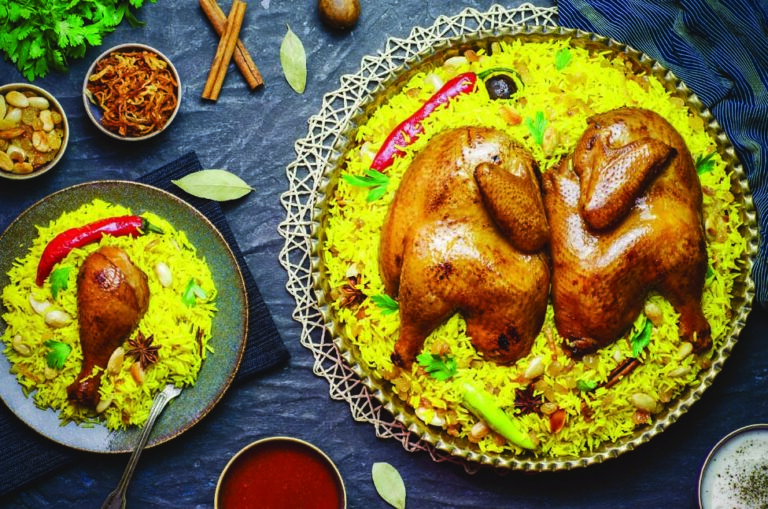Introduction
Kuwaiti Bedouin and Gulf Arab traditions include a rich heritage of nomadic customs and practices, as well as the influence of neighboring countries and cultures. The cuisine of the region reflects these influences, with a mix of traditional techniques and ingredients that have been passed down through generations.
The Bedouin influence on Kuwaiti cuisine
The Bedouin influence on Kuwaiti cuisine can be seen in the use of simple, hearty ingredients and cooking methods that are well-suited to a nomadic lifestyle. Dishes like machboos (rice with meat and spices) and grilled meats like shawarma and kebabs are popular among the Bedouin people, and have become staples of Kuwaiti cuisine. Additionally, the use of dates and camel milk in dishes like jareesh (a porridge made from cracked wheat) and balaleet (a sweet vermicelli pudding) are also nods to the Bedouin way of life.
Gulf Arab culinary traditions in Kuwait
Gulf Arab culinary traditions have also had a significant impact on Kuwaiti cuisine. The use of seafood, spices, and fragrant herbs are common in dishes like machboos samak (fish with rice) and balaleet djej (a chicken and vermicelli pudding). Additionally, dishes like saloona (a vegetable stew) and harees (a savory porridge made with meat and cracked wheat) are popular across the Gulf region and have made their way into Kuwaiti cuisine as well.
Traditional ingredients in Kuwaiti Bedouin and Gulf Arab cuisine
Many of the traditional ingredients used in Kuwaiti Bedouin and Gulf Arab cuisine are reflective of the local environment and climate. For example, the hot and arid climate of the region is well-suited to the growth of date palms, which are a common ingredient in both sweet and savory dishes. Similarly, the salty waters of the Persian Gulf provide a bounty of seafood that is used in many traditional Kuwaiti dishes.
The role of spices in Kuwaiti Bedouin and Gulf Arab cuisine
Spices are a key component of Kuwaiti Bedouin and Gulf Arab cuisine, and are used to add flavor and depth to dishes. Some of the most common spices used in the region include cardamom, cinnamon, cumin, saffron, and turmeric. These spices are often used in combination with one another to create complex and aromatic flavors.
Modern twists on Kuwaiti Bedouin and Gulf Arab dishes
While traditional Kuwaiti Bedouin and Gulf Arab dishes remain popular, modern chefs are also putting their own spin on these classic recipes. For example, some chefs are experimenting with fusion cuisine by incorporating flavors and techniques from other parts of the world, while others are using modern cooking methods and presentation to update traditional dishes. These modern twists on Kuwaiti Bedouin and Gulf Arab cuisine are helping to keep these culinary traditions alive and relevant in a rapidly changing world.

